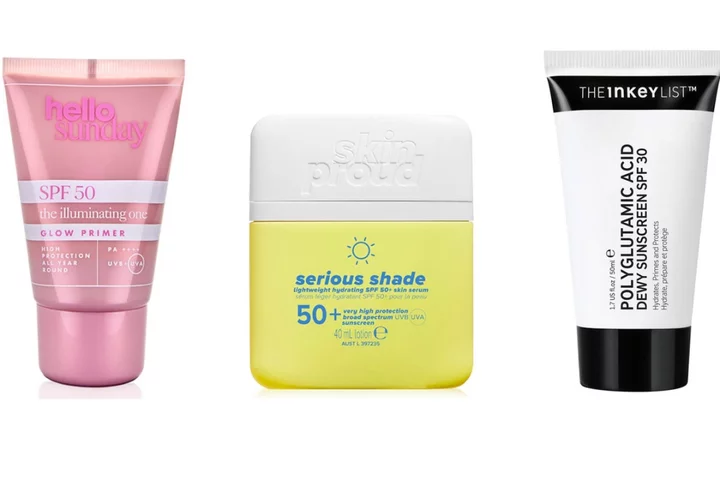Learning how to cope in the heat can be a struggle, with the beaming rays of the sun, the inescapable humidity and the ever-rising temperatures tough to handle for many.
With the Met Office forecasting a shift in weather patterns in the UK and a “warm plume” of air with highs of 30C heading our way, just imagine how your pet may be feeling.
Domestic animals don’t have the luxury of being able to say when they’re feeling overheated or dehydrated, which is why you need to learn how to keep your pet as safe and healthy as possible during these extreme weather conditions.
Whether you’re a dog person or own a reptile, this is how to look after your pet properly as the heatwave runs its course.
Dogs
Dogs with long fur will likely fare worse than their shorter-haired peers during the summer.
However, they are able to cool themselves down by panting and releasing heat through their paws, as animal charity Blue Cross explains.
Dogs do this because they’re unable to sweat through their skin in the same way as humans do.
If a dog does overheat, they could be at risk of suffering from a serious heatstroke, with the charity explaining that “signs of heatstroke in dogs include collapse, excessive panting and dribbling”.
“If you suspect your pet is suffering from the condition, move them to a cool place, preferably with a draught, wet their coat with cool - not freezing - water, and contact your vet immediately,” the charity advises.
Furthermore, leaving a dog in a car on a hot day can have devastating consequences, as the temperature within the car can soar to extreme levels at a rapid rate, which is why it’s advised never to leave a dog in a car in hot conditions.
To ensure that dogs are comfortable during walks on days with excessive heat, the RSPCA recommends only walking your dog in the morning or evening at the peak of summer, as doing so will help prevent them from burning their paws on the pavement or suffering from heatstroke.
You must also make sure that your dog always has access to water.
Cats
Different types of cats may be more prone to sunburn than others, as pet agency Very Important Pets outlines.
“Pale-coloured cats are vulnerable to sunburn; particularly on their ears, noses and sparsely haired areas,” the agency states, adding that, “like in humans, sunburn can sometimes lead to skin cancer.”
While many cat owners may let their feline friends roam at will, the agency recommends keeping your cat indoors during the hottest time of the day, from around 11am until 3pm.
You can even invest in a suncream designed specifically for pets to provide them with adequate protection from the sun’s rays.
Having your cat’s fur trimmed could also be a good course of action in order to make them feel more comfortable in the heat.
Furthermore, if you think that your cat may be feeling overheated, you can use a damp towel to cool them down.
Just like with any other animal, cats shouldn’t be left in cars during a heatwave.
Hamsters
If you normally keep your hamster in a glass or plastic crate, you should be aware that the interior may be hotter than the average room temperature.
This is important to keep in mind when considering where their crate is placed, as putting it on a window sill where it’s exposed to the sun could put your hamster at risk of overheating.
Hamster blog site Hammysworld also suggests placing the crate on a stone or tiled floor during the day if possible in order to help the animals remain cool and comfortable.
You could even place a ceramic tile within the cage as a means of lowering the temperature of the interior even more.
Another trick that the outlet recommends is to place a frozen bottle of water on the side of the outside of the crate while also regularly refreshing your pet’s water supply.
Fish
You may think that your fish is safe in their tank of water as those outside battle the intense heat and humidity.
However, the temperature of the tank can easily rise if the room temperature is higher than normal.
If you have heaters in your fish tank, it would be wise to turn them off, Tropical Fish Site recommends, while it may also be worth reducing the normal temperature of the tank if possible.
Another method that you can employ to help keep the water cool is to put bags filled with ice at the bottom of the tank.
Birds
While birds living in exotic locations around the world may be used to hotter climates, chances are that domesticated birds won’t have the same thresholds for higher temperatures.
According to Bird Supplies, birds may be very susceptible to sudden changes in their environment, which is why knowing how to keep them cool during a heatwave is important.
“Your average bird has a standard core temperature of around 105F or 40C, and are very susceptible to overheating,” the site states.
Some signs to look out for that may indicate that your bird is overheating include if its panting, holding its wings far away from its body or exhibiting anxious behaviour.
Many birds naturally enjoy spending time outdoors. However, if this is the case, you should make sure that the outdoor space that your bird frequents is equipped with shaded areas.
On top of that, the site states that you should make sure to replace the bathing dish of water at the bottom of your bird’s cage at least once a day, while also ensuring that it has a decent supply of clean water to drink.
Reptiles and amphibians
Reptiles and amphibians are ectothermic or cold-blooded, which means that their body temperature relies on external sources, as detailed by Encyclopaedia Britannica.
With that in mind, if the temperature of your home is higher than normal, then your pet snake or lizard could suffer in the hot conditions.
Pet store Just For Pets advises first checking whether the temperature of your home falls within your animal’s ideal range.
If the temperature exceeds its ideal range, then you can cool them down by providing them with clean water and keeping a small fan close by.
Furthermore, you could utilise a similar technique to the one advised for hamster owners by placing a ceramic tile in its enclosure that it can use to lower its body temperature (that you could cool first in the fridge).
Plus, if you place an iced bottle of water nearby, it could help reduce the temperature of the air, thus providing your pet with a more bearable environment.
Read MoreHow to tell if you have Covid or heatstroke
Why do heatwaves in the UK feel hotter than abroad?
How to protect pets from wildfire smoke amid air quality alert
Dog owners shocked after vet shares list of ‘toxic’ substances
Man faces backlash for wanting to bring six-month -old dog to the gym









